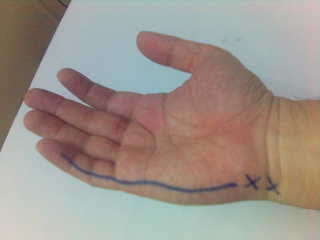Foot bone contusion
Getting a collision of the foot isn't a great thing to have. This chap limped in to see me with a slight swelling on his left foot. He thought it was fine as he was able to jog 6km in his sports shoes. However, he was concerned that he wasn't able to play football. His initial X-rays ruled out a fracture and the ultrasound scan ruled out tendon involvement. (One may resort to do an MRI if there is a high index of suspicion of a stress fracture especially if he has prodromal pain). We resorted to focal shockwave to sort out any bone oedema. He felt much better and was hopeful to play soon. Whatever it is, he would still need to have full pain-free function to execute all the football skills when he goes back to sports specific rehabilitation next week.











.jpg)




.jpg)




